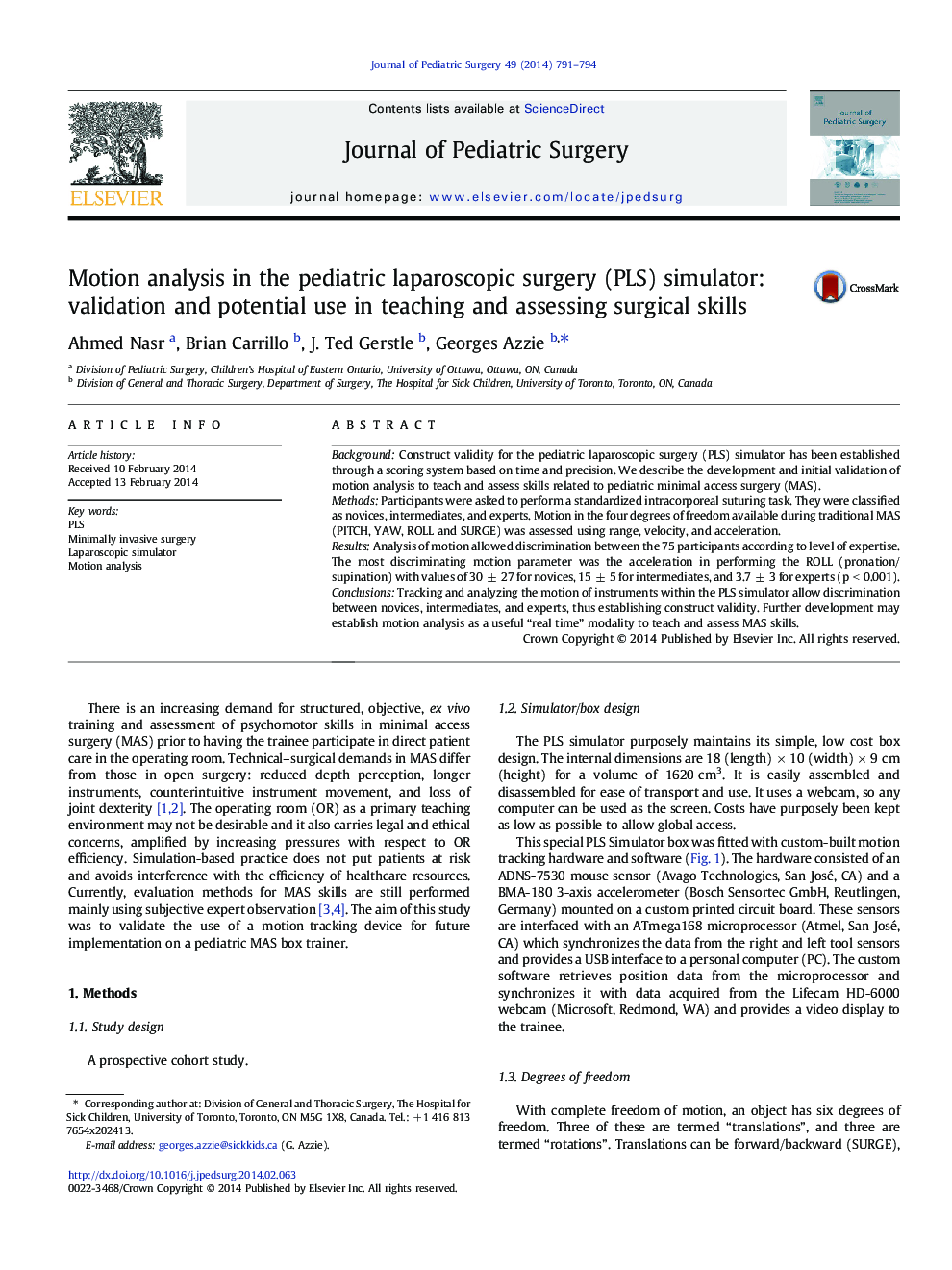| Article ID | Journal | Published Year | Pages | File Type |
|---|---|---|---|---|
| 4155742 | Journal of Pediatric Surgery | 2014 | 4 Pages |
BackgroundConstruct validity for the pediatric laparoscopic surgery (PLS) simulator has been established through a scoring system based on time and precision. We describe the development and initial validation of motion analysis to teach and assess skills related to pediatric minimal access surgery (MAS).MethodsParticipants were asked to perform a standardized intracorporeal suturing task. They were classified as novices, intermediates, and experts. Motion in the four degrees of freedom available during traditional MAS (PITCH, YAW, ROLL and SURGE) was assessed using range, velocity, and acceleration.ResultsAnalysis of motion allowed discrimination between the 75 participants according to level of expertise. The most discriminating motion parameter was the acceleration in performing the ROLL (pronation/supination) with values of 30 ± 27 for novices, 15 ± 5 for intermediates, and 3.7 ± 3 for experts (p < 0.001).ConclusionsTracking and analyzing the motion of instruments within the PLS simulator allow discrimination between novices, intermediates, and experts, thus establishing construct validity. Further development may establish motion analysis as a useful “real time” modality to teach and assess MAS skills.
